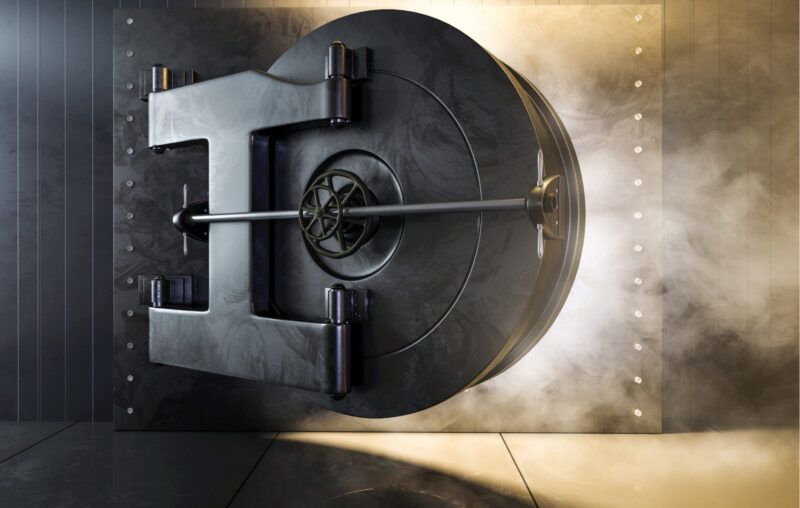Infrastructure Bill as Political Plunder and Social Engineering

Nothing says you really “care” in politics as much as a willingness and, indeed, a demand to spend at least $1 trillion of other people’s money on some supposedly essential public “need.” So, not surprisingly, a bipartisan infrastructure bill is working its way through Congress with just such a $1 trillion price tag.
Also, nothing says you are desperate for constituent votes in an upcoming election more than promises to spend large sums of that money in the state in which you will be running for reelection to either the House of Representatives or the U.S. Senate. I know that it seems like only a mere nine months ago that we were all being bombarded as voters to cast our ballots for the Office of the Presidency, the 435 House seats, and one-third of the Senate. But it must be remembered that even before the November 2020 election voting results were all fully announced, the winners and a host of new contestants were already looking forward to the elections of 2022 and beyond.
Political Pandering for Donor Dollars
That’s the politician’s dilemma with democracy – no guaranteed job security. Yes, it is true that incumbents have strong advantages that result in members of the House of Representatives being reelected around 90 percent of the time, with the incumbency rate in the U.S. Senate being about 85 percent, when looking over the elections between 1964 and 2018, according to the non-profit “Open Secrets” that tracks national political campaigns and from whom the campaign funding comes. But a politician has to keep making sure that his constituents view him as bringing more taxpayers’ money into their pockets than are going out, for them to keep voting his way every time they cast their ballot.
In the 2019-2020 election cycle, construction companies donated, in total, over $202.3 million to candidate campaigns, while transportation businesses gave more than $147 million in campaign contributions. Labor unions, many of whom are directly or indirectly connected with the construction and transportation sectors of the economy (and therefore government spending), gave $259 million. Considering the hundreds of billions of dollars that will be coming their way in any implemented infrastructure bill, investing hundreds of millions of dollars in campaign contributions to help make it possible does not seem like such a bad rate of return.
Infrastructure Spending Provides Political Profit-Making
While less than the original $2.6 trillion bill that President Biden had proposed earlier this year, the planned infrastructure spending, which includes new or additional spending of about $550 billion, still will have plenty to make happy those who want to have taxpayers cover some or all of their costs of doing business. There will be $7.5 billion to help build electric car charging stations across the United States. There will be $5 billion to pay local communities to switch to electric and lower-emission school buses around the country. There will be almost $40 billion for public transit systems to shift to zero or reduced polluting electric buses.
How convenient this is for electric automobile manufacturers and existing or potential electric fuel station companies and franchises who will not have to actually cover all the expenses of making their products’ price and availability attractive enough for consumers and school districts to be willing and able to buy their electric modes of transportation without Uncle Sam’s fiscal assistance. Another way of saying this is that electric-powered motor vehicles and the recharging stations are most likely, for now, not cost-competitive enough to get consumers to purchase and use them at profit-making market prices. These companies are political privilege-receiving rather than market profit-making enterprises.
The same applies to the $73 billion in the bill earmarked for updating the electricity grid around the country to carry wind, solar and other zero-emission sources of energy. If companies currently or planning to provide energy from these sources could, in fact, make or strongly anticipate their profit-making ability, they would be able to cover or raise the investment expenses to supply such grids themselves. Here, again, political privilege replaces market-based profit as a guide and a “stimulus” for investments that otherwise might not take place in the immediate future due to the economic irrationality of these uses of scarce resources.
America’s Roads and Highways are Really Just Fine
If the bill passes in its current form, road and bridge repair and reconstruction will receive at least $110 billion; railways $66 billion; ports and waterways $17 billion; airports $25 billion; road safety, $11 billion; water storage, $50 billion; broadband, $65 billion; water infrastructure, $55 billion, are among the items upon which big bucks are to be spent.
Traditionally, “infrastructure” has meant such things as roads, highways, bridges, dams, waterway and harbor dredging. These have been taken to be partially or totally the responsibility of the government since colonial times in America. In the 19th century, they were referred to as “internal improvements” which while claiming to be about connecting and binding the country together for political unity and economic growth, were notorious for corruption, favoritism, and abuse in terms of the private enterprises that received contracts or financial support from those in the halls of Congress who determined how much and on whom the taxpayer monies were to be expended and dispersed. From the start, many in the private sector were hooked on the “governmental habit” of financial “fixes” at taxpayers’ expense for their survival or greater profitability.
The media has been full of stories on the woeful state of America’s current infrastructure. However, panic and catastrophe are clearly greatly exaggerated expressions to describe the state of roads, bridges and highways in the United States.
According to a 2019 study by the Hamilton Project, the Interstate Highway System was improved and enlarged between 1980 and 2008 from about 175,000 lane miles of road to over 210,000 lane miles, for a 20 percent increase. At the same time, a measurement of “road roughness” declined from almost 120,000 lane miles in 1992 to less than 95,000 lane miles in 2008, for a 20 percent decrease, as the total number of lane miles were growing. And while these highway improvements have been going on, drivers are only using between 20 to 40 percent of highway traffic capacity on an annual basis, depending where and when around the country in urban versus rural areas. Indeed, according to a 2019 ranking given by the World Economic Forum, the U.S. was among the top five countries around the globe for quality of road infrastructure and among the top six for quality of road conditions.
U.S. also has one of the best commute times to and from work in the world, according to the Organization for Economic Co-operation and Development (OECD), with on average about 20 minutes during an ordinary day, compared to almost 60 minutes in South Korea, about 50 minutes in China, 40 minutes in Japan and Turkey, and in the European Union as a whole an average of about 30-35 minutes per day.
America’s Bridges are Mostly in Good Shape
As for bridges in the United States, a May 2020 report by the Congressional Research Service (CRS), that drew upon findings made by the Federal Highway Administration (FHWA), observed that out of the total of 617,000 bridges across America, only 46,000 were classified as in “poor” condition, or 7.5 percent of all the bridges, with most of the remaining ones judged fair or good or better. In addition, the CRS report also points out that according to the FHWA, the number of roads in poor condition has decreased by 20 percent over the last 20 years, while those considered to be “structurally deficient” have declined over thirty percent just between 2000 and 2016 to less than 9 percent of all bridges.
When these are broken down into “urban” or “rural” bridges, the roads considered to be “structurally deficient” in rural areas have decreased by about 33 percent, to only 10 percent of rural bridges. While in urban areas, the number of bridges similarly classified has fallen nearly 50 percent to only about 6 percent of urban bridges, over the first decade and a half of the 21st century. There are only two states in which there are more than 20 percent of existing bridges considered to be structurally “poor:” Rhode Island and West Virginia.
And only three more states having 15 percent of their bridges so classified: Iowa, South Dakota, and Pennsylvania. All the other 45 states are mostly below 10 percent in terms of “poor” bridges, and out of those 45 states there are 16 of them that have only 5 percent or less of their bridges considered in “poor” quality. Clearly, a number of bridges may need serious structural repair, as measured and classified by the FHWA, but certainly it is not a “national crisis” threatening the economy or safety of the country as a whole. In general, America’s bridge infrastructure would have to be considered in good working order, all things considered.
As one commentator, Charles Lane, recently concluded on the opinion page of the Washington Post, “The big picture . . . is that the gigantic U.S. infrastructure is fundamentally sound – impressively, but not surprisingly, given that governments at all levels spend $370.5 billion on it in 2018, up from $284 billion in 2008, according to official data.” While Lane is usually considered on the “conservative” side of political issues, Matthew Yglesias would be viewed as a “progressive,” and he too in a column not long ago reached the same conclusion that the American roads and bridges “are fine,” with tax dollars better spent in other directions.
Infrastructure Spending Enlarged to Include More Welfare Statism
Mr. Yglesias’s conclusion from his look at the status of road and bridge infrastructure in America today is that a lot more dollars would be far better spent in other directions. But in his mind, this does not mean lowering taxes or refraining from raising taxes so those dollars would be left up to the private individuals who had earned them in the marketplace. No, he wants those same taxed dollars (and the real resources their purchasing power reflects in the market) to remain in the hands of the government, only to be spent by politicians in a variety of different ways upon which he places a higher priority.
These higher priorities are basically the ones upon which Joe Biden and the Democratic Party leadership in the Congress made clear they wanted to spend money on in the weeks immediately after Biden’s inauguration, with a total of more than $2.6 trillion not in the current infrastructure bill. This includes $566 billion for research and development and manufacturing innovation relating to climate change and alternative energy sources, along with grants for historically Black colleges and universities; $387 billion for housing, schools and buildings mostly directed to “people of color,” and women; $400 billion on home and community-based “care” for the elderly and disabled, and wage and work condition improvements for those working in this sector, especially racial minorities and low-income workers; and $363 billion for “clean energy tax credits,” basically more government subsidization of market loss-making or low profit suppliers of wind, solar, and other so-called “renewable” power sources.
To win enough Republican support for the current bill, these areas of planned government spending were temporarily set aside to get enough votes to pass the bill in both houses of Congress. But the Democrats have made clear that once this bill is made into law, they will go for a second bill with all this additional spending without GOP votes, if necessary, through special voting procedures, especially, in the Senate.
For the Democratic and “progressive” and “democratic” socialist proponents of all this spending, it all now counts as part of America’s “infrastructure,” the new word to replace the phrases welfare statism, political paternalism, and centralized planning of social and economic life, with all their negative connotations in the eyes of too many Americans.
Political Paternalism and Plunder Equals Infrastructure Spending
Ideology and political plunder explain a good part, if not most, of what all this “infrastructure” spending is really all about. In terms of ideology, it concerns placing more power and control over private lives and economic decision-making under the direction or influence of those in governmental positions of authority. These are among the people who just know that they know how all of us should live and work and associate better than if we were left peacefully alone to decide such things for ourselves. Their most radical dreams involve them deciding and determining the relative status and circumstance of each and every one of us, on the basis of such conceptions and classifications derived, most recently, from identity politics, critical race theory, and the hysteria of “climate change” and pandemic fear mongering.
And it involves the crasser motives of huge networks of special interest groups, each of which sees a lot of government dollars coming their way so they do not have to as effectively prove their profitable worth in the rivalrous give and take of actual freer market competition. It’s the old and tragic story of those wanting to eat at the government trough filled with taxpayer dollars and anti-competitive restrictions and regulations.
Before Government Road Socialism There were Private Roads
Even if we return to the narrower and more traditional meaning and definition of infrastructure as involving such things as roads, highways, bridges and the like, a deeper question may be asked: Why is government in this infrastructure business at all? If this seems peculiar or even perverse to suggest that such means and methods of transportation should be in the hands and decision-making of private enterprises rather than those of the government, older economists sometimes reminded us of this option and its past frequency.
For instance, 19th century American economist, Francis A. Walker (1840-1897) explained this in his 1887 textbook on Political Economy. Highly respected in his time, Walker served as the inaugural president of the American Economic Association in 1886, and served for 15 years as president of the Massachusetts Institute of Technology (MIT) until his death in 1897.
While not fully opposed to it, Walker even referred to government provision of such goods as road and bridges as a form of socialism:
“Public roads and bridges also exhibit the socialistic character in a highly marked degree. In a very primitive state of society, where yet, all the police powers are fully exercised, each man looks out for his own paths of travel and transport, and maintains his own communications with friends and neighbors across the commons or through the forest. Even after roads are laid out, and later still, are graded, drained and paved, at great expense, and streams and ravines are bridged, this work continues to be regarded as altogether a matter of private enterprise.
“Individuals or associations lay out the roads and build the bridges, collecting toll from everyone who passes over them. Those who use the road much pay more; those who use them little pay little; those who stay at home pay nothing at all . . . There comes a time [when government takes over the supply of roads and bridges] . . . though this function naturally belongs to individuals, and has indeed been exercised by individuals with a reasonable degree of success . . .
The step thus taken is purely, highly socialistic. The responsibility, the labor, the expenditure involved in these undertakings pass from private citizens to public officials. Individuals no longer pay for this service according to the proportion in which they enjoy it. Each contributes [through taxes], whether he will or not, to the construction and maintenance of roads and bridges, which he may use much or may not use at all.” (p. 520)
Why Not Private Roads Instead of by Government?
In those earlier times, roads and bridges would have been laid out, built and maintained in those places and between those distances that were considered where the users of those roads and bridges desired them, in terms of personal purposes and commercial and market transactions in getting from one location to another. Supply would have tended to reflect the demands of travelers. The quality and ease of moving on the roads and bridges would have reflected the intensity and frequency of the traveling preferences of travelers, given the opportunity costs of using the scarce resources involved for alternative valued market purposes.
Instead, today and for a long time, the building of roads and bridges have reflected where the political planners have believed how and where means of travel should be laid out. It has been transportation social engineering based on the vision of government paternalists deciding how we should live, work, and move about under the presumption that they know the “rational” way communities and means of getting between them should be designed.
And, of course, with no markets or prices in most instances for finding out where and what types of roads and bridges people might be interested in having produced and supplied for their travels, it has contained all the economic irrationality of other forms of monopolized government central planning.
But Joe Biden and the Congressional Democrats and Republicans consider it their political business to impose infrastructure spending and construction on the rest of us. And with those trillions to spend, transportation planned chaos and political corruption will determine these things, instead of you and me with our market demands in response to which private suppliers would more rationally respond to what we want.










